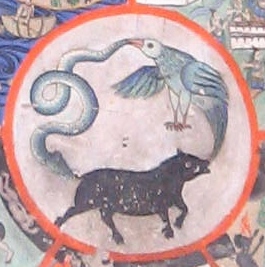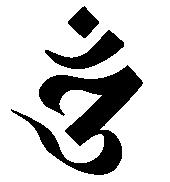|
Buddhist Ethics
Buddhist ethics are traditionally based on what Buddhists view as the Enlightenment in Buddhism, enlightened perspective of the Buddha. The term for ethics or morality used in Buddhism is ''Śīla'' or ''sīla'' (Pāli). ''Śīla'' in Buddhism is one of three sections of the Noble Eightfold Path, and is a code of conduct that embraces a commitment to harmony and self-restraint with the principal motivation being nonviolence, or freedom from causing harm. It has been variously described as virtue, moral discipline and precept. ''Sīla'' is an internal, aware, and intentional ethical behavior, according to one's commitment to the path of liberation. It is an ethical compass within self and relationships, rather than what is associated with the English word "morality" (i.e., obedience, a sense of obligation, and external constraint). ''Sīla'' is one of the Threefold Training, three practices foundational to Buddhism and the non-sectarian Vipassana movement; ''sīla,'' ''Samadhi#Bu ... [...More Info...] [...Related Items...] OR: [Wikipedia] [Google] [Baidu] |
Ashoka%27s Pillar%2C Vaishali
Ashoka (, ; also ''Asoka''; 304 – 232 BCE), popularly known as Ashoka the Great, was the third emperor of the Maurya Empire of Indian subcontinent during to 232 BCE. His empire covered a large part of the Indian subcontinent, stretching from present-day Afghanistan in the west to present-day Bangladesh in the east, with its capital at Pataliputra. A patron of Buddhism, he is credited with playing an important role in the spread of Buddhism across ancient Asia. Much of the information about Ashoka comes from Edicts of Ashoka, his Brahmi edicts, which are among the earliest long inscriptions of ancient India, and the Buddhist legends written centuries after his death. Ashoka was son of Bindusara, and a grandson of the dynasty's founder Chandragupta Maurya, Chandragupta. During his father's reign, he served as the governor of Ujjain in central India. According to some Buddhist legends, he also suppressed a revolt in Takshashila as a prince, and after his father's d ... [...More Info...] [...Related Items...] OR: [Wikipedia] [Google] [Baidu] |
Buddhist Scriptures
Buddhist texts are those religious texts which belong to the Buddhist tradition. The earliest Buddhist texts were not committed to writing until some centuries after the death of Gautama Buddha. The oldest surviving Buddhist manuscripts are the Gandhāran Buddhist texts, found in Afghanistan and written in Gāndhārī, they date from the first century BCE to the third century CE. The first Buddhist texts were initially passed on orally by Buddhist monastics, but were later written down and composed as manuscripts in various Indo-Aryan languages (such as Pāli, Gāndhārī, and Buddhist Hybrid Sanskrit) and collected into various Buddhist Canons. These were then translated into other languages such as Buddhist Chinese (''fójiào hànyǔ'' 佛教漢語) and Classical Tibetan as Buddhism spread outside of India. Buddhist texts can be categorized in a number of ways. The Western terms "scripture" and "canonical" are applied to Buddhism in inconsistent ways by Wes ... [...More Info...] [...Related Items...] OR: [Wikipedia] [Google] [Baidu] |
Merit (Buddhism)
Merit ( sa, puṇya, italic=yes, pi, puñña, italic=yes) is a concept considered fundamental to Buddhist ethics. It is a beneficial and protective force which accumulates as a result of good deeds, acts, or thoughts. Merit-making is important to Buddhist practice: merit brings good and agreeable results, determines the quality of the next life and contributes to a person's growth towards enlightenment. In addition, merit is also shared with a deceased loved one, in order to help the deceased in their new existence. Despite modernization, merit-making remains essential in traditional Buddhist countries and has had a significant impact on the rural economies in these countries. Merit is connected with the notions of purity and goodness. Before Buddhism, merit was used with regard to ancestor worship, but in Buddhism it gained a more general ethical meaning. Merit is a force that results from good deeds done; it is capable of attracting good circumstances in a person's life, as ... [...More Info...] [...Related Items...] OR: [Wikipedia] [Google] [Baidu] |
Three Poisons (Buddhism)
The three poisons (Sanskrit: ''triviṣa''; Tibetan: ''dug gsum'') or the three unwholesome roots (Sanskrit: ''akuśala-mūla''; Pāli: ''akusala-mūla''), in Buddhism, refer to the three root kleshas: '' Moha'' (delusion, confusion), ''Raga'' (greed, sensual attachment), and ''Dvesha'' (aversion, hate). These three poisons are considered to be three afflictions or character flaws innate in a being, the root of ''Taṇhā'' (craving), and thus in part the cause of '' Dukkha'' (suffering, pain, unsatisfactoriness) and rebirths. The three poisons are symbolically drawn at the center of Buddhist ''Bhavachakra'' artwork, with rooster, snake, and pig, representing greed, ill will, and delusion respectively. Brief description In the Buddhist teachings, the three poisons (of ignorance, attachment, and aversion) are the primary causes that keep sentient beings trapped in samsara. These three poisons are said to be the root of all of the other kleshas. The three poisons are represente ... [...More Info...] [...Related Items...] OR: [Wikipedia] [Google] [Baidu] |
Bīja
In Hinduism and Buddhism, the Sanskrit term Bīja () ( Jp. 種子 shuji) (Chinese 种子 zhǒng zǐ), literally seed, is used as a metaphor for the origin or cause of things and cognate with bindu. Buddhist theory of karmic seeds Various schools of Buddhist thought held that karmic effects arose out of seeds that were latent in an individual's mindstream or psycho-physical continuum.Fukuda, Takumi. BHADANTA RAMA: A SAUTRANTIKA BEFORE VASUBANDHU, Journal of the International Association of Buddhist Studies, Volume 26 Number 2 2003. Rupert Gethin describes the theory thus: When I perform an action motivated by greed, it plants a 'seed' in the series of dharmas henomenathat is my mind. Such a seed is not a thing in itself - a dharma but merely the modification or 'perfuming' of the subsequent flow of dharmas consequent upon the action. In the course of time this modification matures and issues in a particular result, in the same way as a seed does not produce its fruit immediately, ... [...More Info...] [...Related Items...] OR: [Wikipedia] [Google] [Baidu] |
Phala
Phala is a Sanskrit term that means “fruit” of one's actions in Hinduism and Buddhism. In Buddhism, the following types of ''phala'' are identified: * ''Ariya-phala'' also refers to the fruition of following the Buddhist path. * ''Maha-phala'' refers the ''great fruits'' of the contemplative life. Within Hinduism In Hinduism, the term ''phala'' is translated as fruition, results, effects. The Yoga-Sûtra of Patañjali (verse 2.36) states: : As truthfulness (satya) is achieved, the fruits of actions naturally result according to the will of the Yogi. (satya pratisthayam kriya phala ashrayatvam) Within Buddhism Within Buddhism, the term ''phala'' is used to refer to the fruition or results of actions according to the doctrine of karmic action and result. Alternate translations The term ''phala'' is translated as: * fruit (Harvey, 1990, p. 39; Keown, 2000, loc 810-813) * fruition * effect (Ven. D. Mahinda Thera) Ariya-phala The term ''Ariya phala'' is used to refer specif ... [...More Info...] [...Related Items...] OR: [Wikipedia] [Google] [Baidu] |
Rebirth (Buddhism)
Rebirth in Buddhism refers to the teaching that the actions of a sentient being lead to a new existence after death, in an endless cycle called '' saṃsāra''. This cycle is considered to be '' dukkha'', unsatisfactory and painful. The cycle stops only if moksha (liberation) is achieved by insight and the extinguishing of craving. Rebirth is one of the foundational doctrines of Buddhism, along with karma, Nirvana and liberation. Rebirth was however less relevant among early Buddhist teachings, which also mentioned the beliefs in an afterlife, ancestor worship, and related rites. The concept varies among different Buddhist traditions. The rebirth doctrine, sometimes referred to as reincarnation or transmigration, asserts that rebirth takes place in one of the six realms of samsara, the realms of gods, demi-gods, humans, the animal realm, the ghost realm and hell realms. Rebirth, as stated by various Buddhist traditions, is determined by karma, with good realms favored by ''kush ... [...More Info...] [...Related Items...] OR: [Wikipedia] [Google] [Baidu] |
Karma
Karma (; sa, कर्म}, ; pi, kamma, italic=yes) in Sanskrit means an action, work, or deed, and its effect or consequences. In Indian religions, the term more specifically refers to a principle of cause and effect, often descriptively called the principle of karma, wherein intent and actions of an individual (cause) influence the future of that individual (effect): Good intent and good deeds contribute to good karma and happier rebirths, while bad intent and bad deeds contribute to bad karma and bad rebirths. As per some scripture, there is no link of rebirths with karma. The concept of karma is closely associated with the idea of rebirth in many schools of Indian religions (particularly Hinduism, Buddhism, Jainism and Sikhism), as well as Taoism.Eva Wong, Taoism, Shambhala Publications, , pp. 193 In these schools, karma in the present affects one's future in the current life, as well as the nature and quality of future lives—one's '' saṃsāra''. This concept has ... [...More Info...] [...Related Items...] OR: [Wikipedia] [Google] [Baidu] |
The Wheel Of Life%2C Trongsa Dzong
''The'' () is a grammatical article in English, denoting persons or things already mentioned, under discussion, implied or otherwise presumed familiar to listeners, readers, or speakers. It is the definite article in English. ''The'' is the most frequently used word in the English language; studies and analyses of texts have found it to account for seven percent of all printed English-language words. It is derived from gendered articles in Old English which combined in Middle English and now has a single form used with pronouns of any gender. The word can be used with both singular and plural nouns, and with a noun that starts with any letter. This is different from many other languages, which have different forms of the definite article for different genders or numbers. Pronunciation In most dialects, "the" is pronounced as (with the voiced dental fricative followed by a schwa) when followed by a consonant sound, and as (homophone of pronoun ''thee'') when followed by a v ... [...More Info...] [...Related Items...] OR: [Wikipedia] [Google] [Baidu] |
Right View
View or position (Pali ', Sanskrit ') is a central idea in Buddhism. In Buddhist thought, a view is not a simple, abstract collection of propositions, but a charged interpretation of experience which intensely shapes and affects thought, sensation, and action. Having the proper mental attitude toward views is therefore considered an integral part of the Buddhist path, as sometimes correct views need to be put into practice and incorrect views abandoned, and sometimes all views are seen as obstacles to enlightenment. Positions Views are produced by and in turn produce mental conditioning. They are symptoms of conditioning, rather than neutral alternatives individuals can dispassionately choose. The Buddha, according to early texts, having attained the state of unconditioned mind, is said to have "passed beyond the bondage, tie, greed, obsession, acceptance, attachment, and lust of view." Those who wish to experience nirvana must free themselves from everything binding them t ... [...More Info...] [...Related Items...] OR: [Wikipedia] [Google] [Baidu] |








.png)
